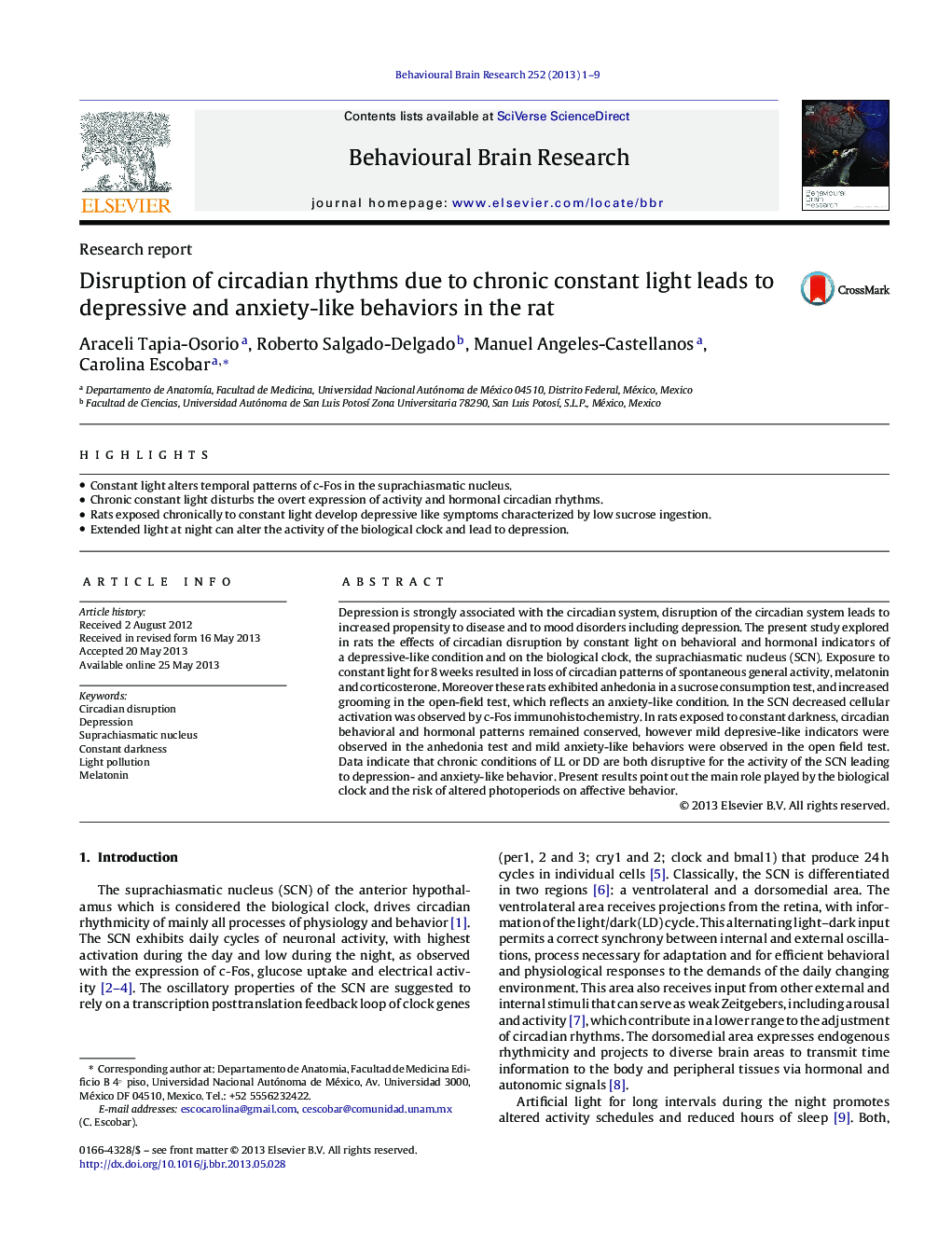| کد مقاله | کد نشریه | سال انتشار | مقاله انگلیسی | نسخه تمام متن |
|---|---|---|---|---|
| 4312587 | 1612980 | 2013 | 9 صفحه PDF | دانلود رایگان |

• Constant light alters temporal patterns of c-Fos in the suprachiasmatic nucleus.
• Chronic constant light disturbs the overt expression of activity and hormonal circadian rhythms.
• Rats exposed chronically to constant light develop depressive like symptoms characterized by low sucrose ingestion.
• Extended light at night can alter the activity of the biological clock and lead to depression.
Depression is strongly associated with the circadian system, disruption of the circadian system leads to increased propensity to disease and to mood disorders including depression. The present study explored in rats the effects of circadian disruption by constant light on behavioral and hormonal indicators of a depressive-like condition and on the biological clock, the suprachiasmatic nucleus (SCN). Exposure to constant light for 8 weeks resulted in loss of circadian patterns of spontaneous general activity, melatonin and corticosterone. Moreover these rats exhibited anhedonia in a sucrose consumption test, and increased grooming in the open-field test, which reflects an anxiety-like condition. In the SCN decreased cellular activation was observed by c-Fos immunohistochemistry. In rats exposed to constant darkness, circadian behavioral and hormonal patterns remained conserved, however mild depresive-like indicators were observed in the anhedonia test and mild anxiety-like behaviors were observed in the open field test. Data indicate that chronic conditions of LL or DD are both disruptive for the activity of the SCN leading to depression- and anxiety-like behavior. Present results point out the main role played by the biological clock and the risk of altered photoperiods on affective behavior.
Journal: Behavioural Brain Research - Volume 252, 1 September 2013, Pages 1–9